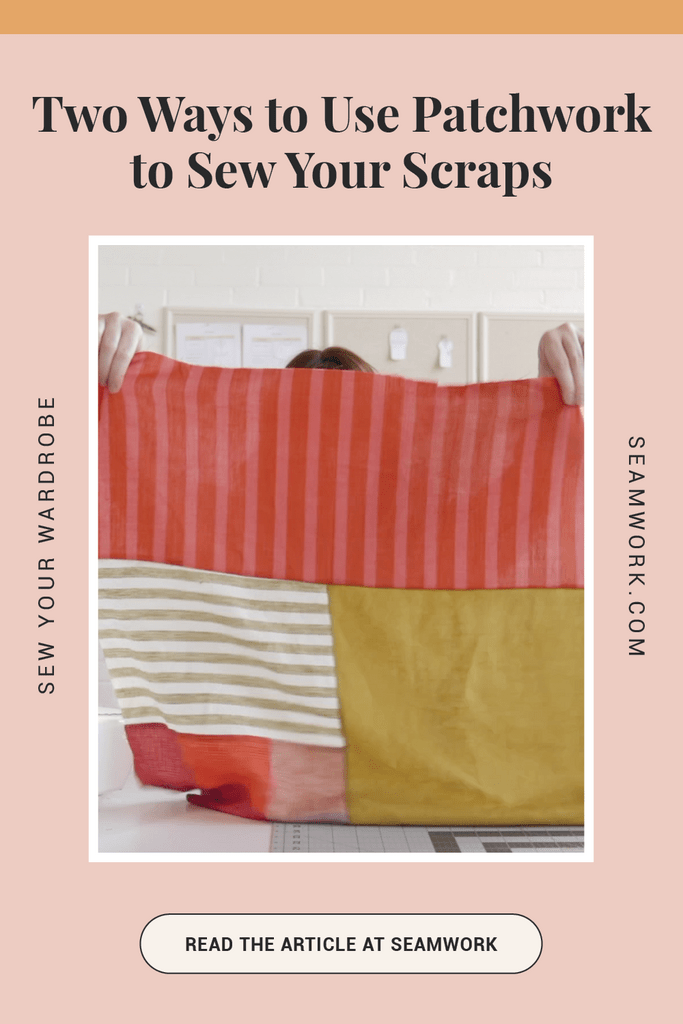Do you have a lot of fabric scraps hanging out in your sewing area? Or do you need help with what to do when you finish a project, and there are some sizable pieces left over?
It’s time for scrap busting!
With the holidays approaching, we’re reviving our 8 Weeks of Mindful Making series on YouTube. This year, the theme is scrap busting.
Over the next 8 weeks, we’ll share fun, scrap-busting tutorials, patterns, and ideas for using up all your leftovers so there’s less waste leaving your sewing space.
Today, I will show you two ways to use patchwork to make beautiful projects from scraps you already have.
Patchwork garments are so cute and trendy, and they're such an easy, sustainable way to show off your creativity.
Watch the video and read the tutorial below. Then comment and let me know what you made from your scraps!
Method 1: Patchwork Yardage
I like this method because it feels improvisational and meditative, capturing the spirit of mindful making we’re trying to imbue with this series!
In this method, you are creating patchwork yardage. This means you are sewing your scraps together to make yardage to cut out your projects.
Here’s how to do it. First, lay your scrap pieces on top of each other. Treat it like a puzzle to get the color combinations you like.
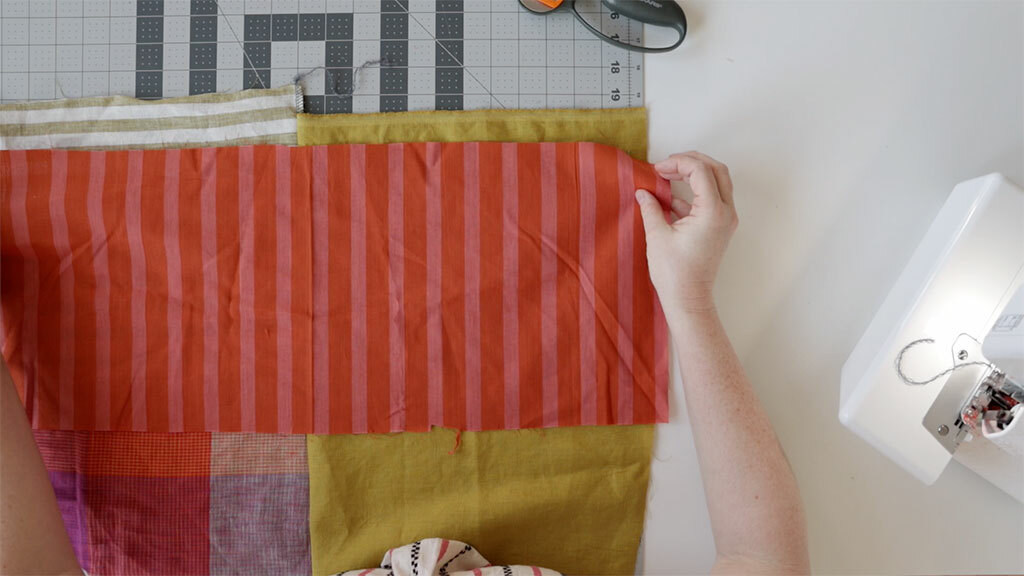
You want to attach pieces along straight edges so you don’t get lumps and bumps in your yardage. Although, if you’re particularly skilled at quilting, you can play with curves as long as your final yardage lays flat.
You don’t have to worry too much about grainline with this method. Have fun and play with angles.
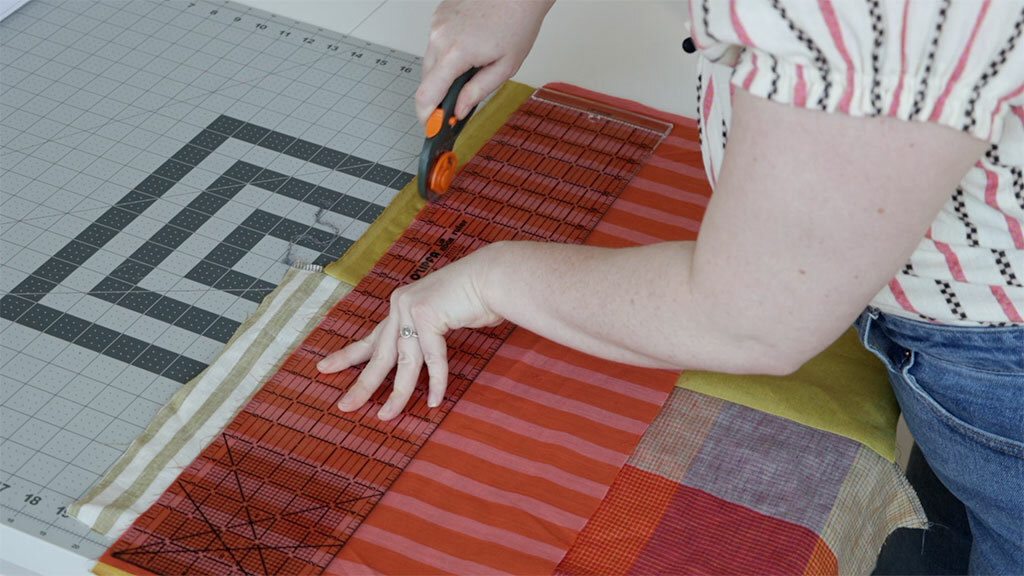
If you have uneven edges, use a ruler and rotary cutter to ensure you work with a straight line. You can also use a marking tool and ruler and cut with your shears.
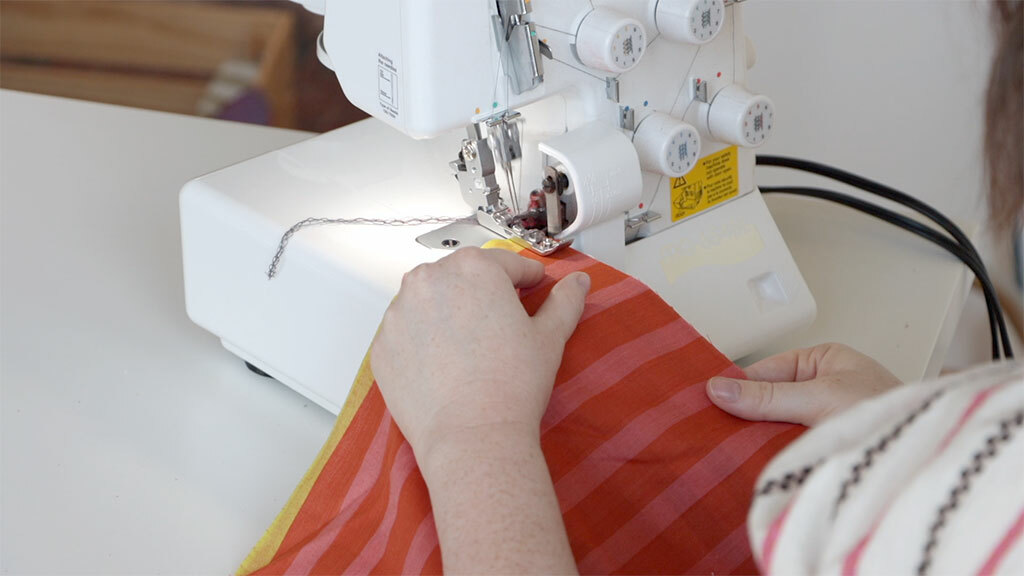
Once you have a clean edge, use your serger to join your pieces of fabric. You can also use your regular machine and finish the edges with a zigzag.
Press each seam so your fabric lays flat. Now you have brand new yardage! Cut out and assemble your project as usual.
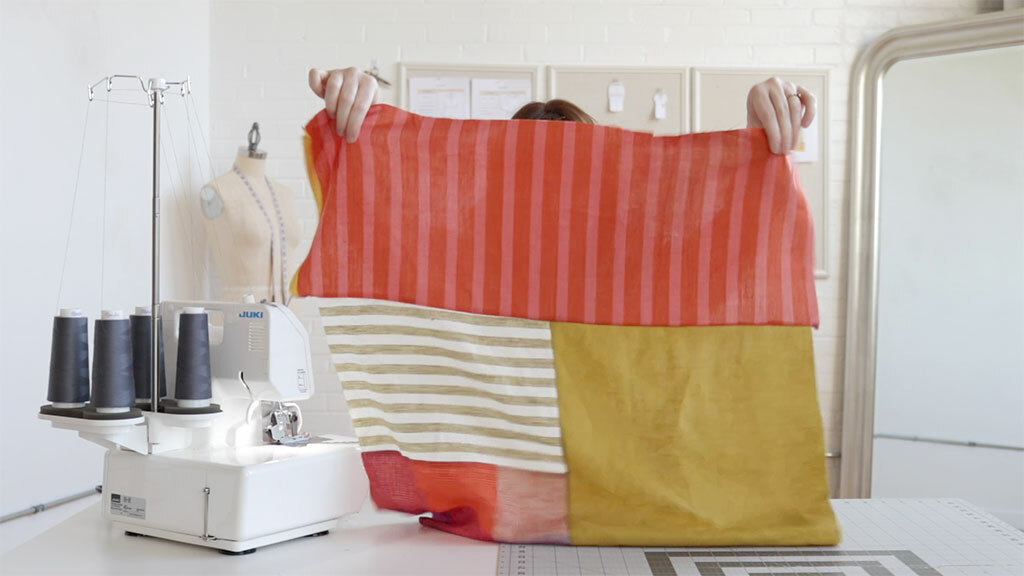
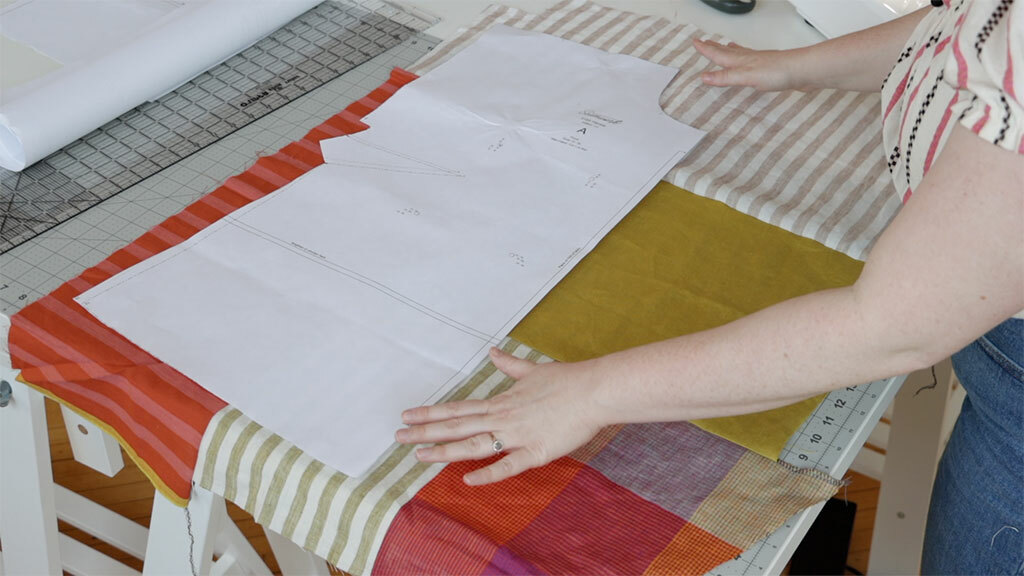
Check the width and length of your yardage as you go so you aren’t patchworking more than you need for your project.
Method 2: Color-blocking
In this method, you draw style lines on your pattern piece, add seam allowance, and then cut out each piece from different fabrics. Then, you sew those all together and finish your garment as usual. It’s essentially color-blocking! Here’s how to do it.
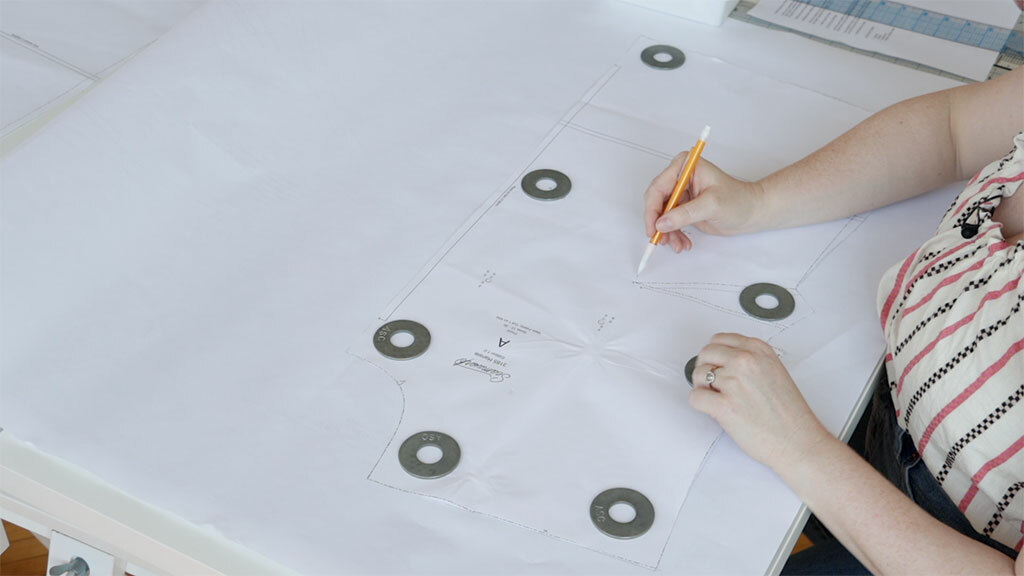
First, trace your pattern. If you’re planning on doing something symmetrical, you can trace on the half so you cut on the fold. However, if you want something asymmetrical, you will want to trace a mirrored copy of your pattern so you can cut flat.
Transfer your original grainline to the traced pattern piece. You’ll need it later.
Now is the fun part! You can experiment with the shapes you want to create with your patchwork.
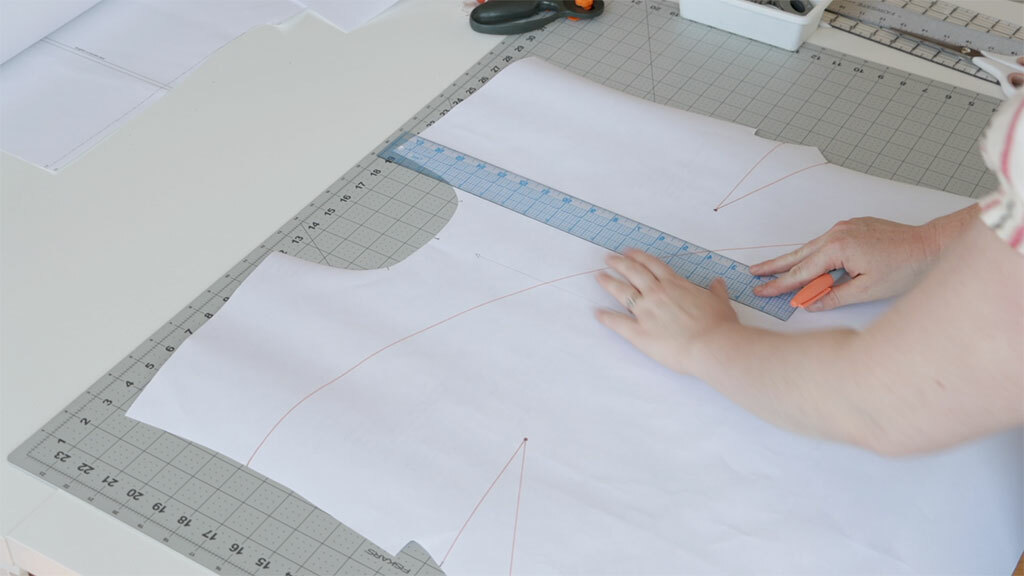
Draw the lines where you want your seamlines to be. You can use rulers or other curved edges (like a salad bowl), or you can freehand it.
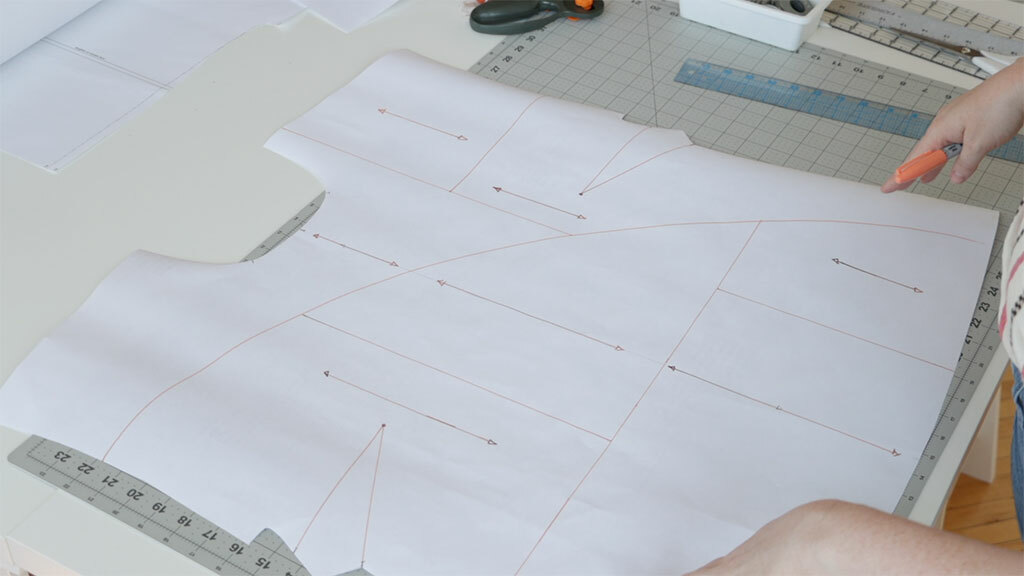
Be mindful of the landmarks on your pattern. Try not to add style lines through darts or pleats.
Next, transfer your grainline to each piece you will color-block.
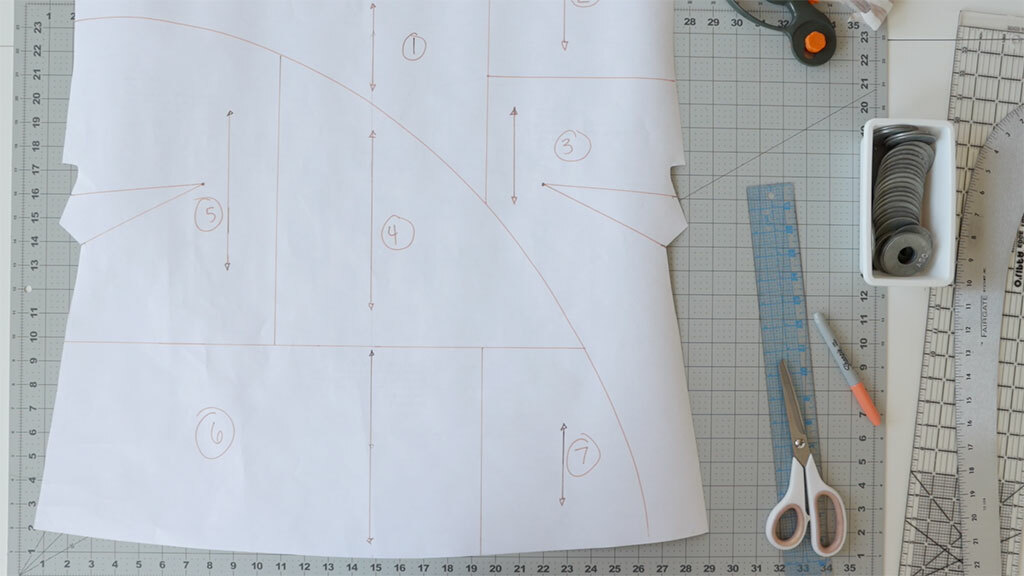
It helps to number or label your pieces so it makes sense when you assemble your garment. Tip: Snap a picture on your phone so you know how it all goes together.
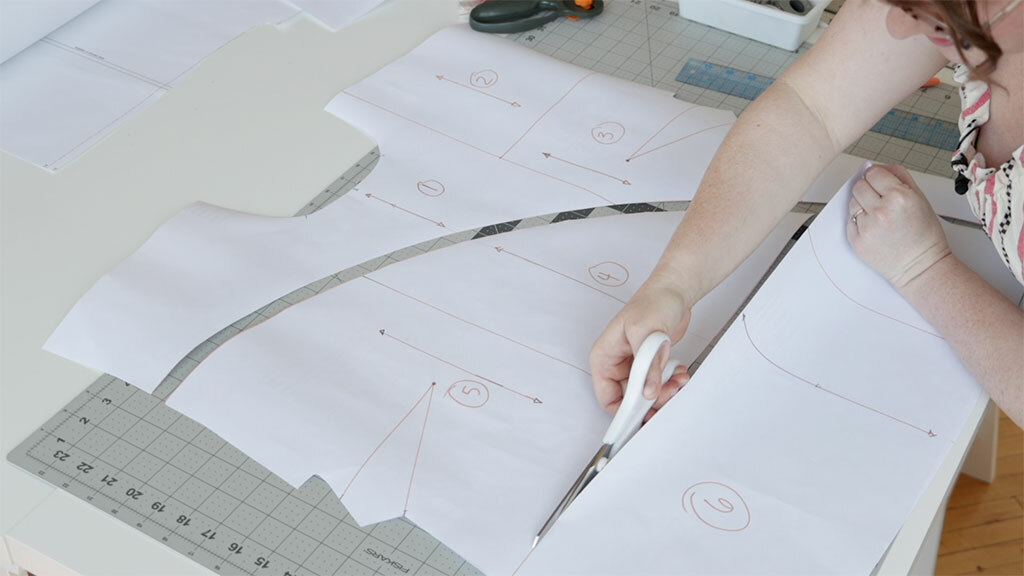
Finally, add seam allowance to each piece that has an interior line. No need to add seam allowance to the perimeter because that’s already included in the pattern.
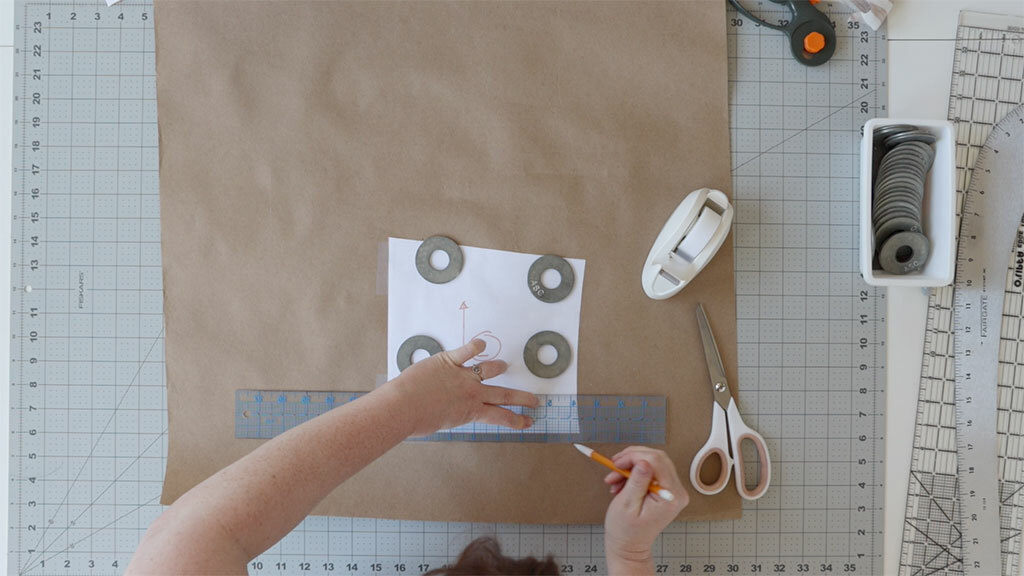
Once you’ve added your seam allowances, you can cut out your pattern pieces, paying attention to the grainlines you added. Then, assemble all your color-blocked pieces and finish the garment as instructed!
Do you have any questions about patchwork? Or any patchwork projects to show off? Comment and let me know!


